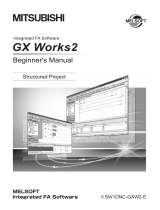
A - 4
Print date Manual number Revision
Sep., 2010 SH(NA)-080787ENG-G
Section 4.2.7
GENERIC TERMS AND ABBREVIATIONS IN THIS MANUAL, Section 3.2.2,
Section 3.2.3, Section 3.2.6, Section 3.3.1, Section 3.3.2, Section 3.5, Section 3.6,
Section 4.1.2, Section 4.2.3, Section 4.2.5, Section 4.2.6, Section 4.2.8
Jan., 2011 SH(NA)-080787ENG-H
MANUALS, Section 2.1, Section 3.2.1, Section 3.2.2, Section 3.2.3,
Section 3.2.4, Section 3.2.5, Section 3.2.6, Section 3.2.8, Section 3.3.1,
Section 3.3.2, Section 3.4.1, Section 3.4.2, Section 3.5, Section 3.6, Section 3.7.2,
Section 3.7.3, Section 3.7.4, Section 3.8, Section 4.2.6, Section 4.2.7, Section 4.4.1,
Section 4.7
Jul., 2011 SH(NA)-080787ENG-I
MANUALS, Section 1.1, Section 2.2, Section 3.2.1, Section 3.2.2, Section 3.2.3,
Section 3.2.6, Section 3.2.7, Section 3.2.8, Section 3.3.2, Section 3.4.1,
Section 3.4.2, Section 3.6, Section 3.7.1, Section 3.7.2, Section 3.7.3, Section 3.8,
Section 3.9, Section 4.1.2, Section 4.2.6, Section 4.2.7, Section 4.4.1
Jan., 2012 SH(NA)-080787ENG-J
MANUALS, GENERIC TERMS AND ABBREVIATIONS IN THIS MANUAL,
Section 3.2.3, Section 3.2.6, Section 3.3.1, Section 3.4.1, Section 3.4.2,
Section 3.8, Section 4.2.6, Section 4.2.7, Section 4.2.8, Section 4.4.1
May, 2012 SH(NA)-080787ENG-K
MANUALS, GENERIC TERMS AND ABBREVIATIONS IN THIS MANUAL,
Section 3.2.1, Section 3.2.2, Section 3.2.3, Section 3.2.5, Section 3.2.6,
Section 3.4.1, Section 3.4.2, Section 4.2.6, Section 4.2.7, Section 4.4.1
Feb., 2013 SH(NA)-080787ENG-L
GENERIC TERMS AND ABBREVIATIONS IN THIS MANUAL,
Section 3.2.6, Section 3.2.8, Section 3.3.2, Section 3.4.1, Section 3.4.2, Section 3.5,
Section 4.2.6, Section 4.2.7, Section 4.4.1
May, 2013 SH(NA)-080787ENG-M
Q04UDPV, Q06UDPV, Q13UDPV, Q26UDPV, L02S-P, L06-P, L26-P, FX
3S
MANUALS, GENERIC TERMS AND ABBREVIATIONS IN THIS MANUAL,
Section 3.2.1, Section 3.2.2, Section 3.2.3, Section 3.3.1
Dec., 2013 SH(NA)-080787ENG-N
Section 3.2.3, Section 3.8, Section 3.9
Jun., 2014 SH(NA)-080787ENG-O Front cover correction
Addition
Correction
Correction
Correction
Correction
Correction
Correction
Model Addition
Correction
Correction
























